Erin Driessen – 19 March, 2012
It's the relationship between the sculptures that defines them as such, it being just as important as the forms themselves, for it is fraught with tension. The dogs are so carefully positioned we can imagine that space narrowing and trapping us in the middle. They are so life-like and the gallery space at times so quiet, that the anticipation of any bark or whistle adds to that suspenseful dynamic.
Mack sits with his tongue out, ears flopped back and eyes shut, begging for a pat on the head. Tess rests rigidly, watching the door. Beyond these two are three others watching each other from across the room. Rex seems aggressive, staring at Buckley who stares back. Jock’s ears are pointed towards the ground as he observes Rex and Buckley from his corner. Hannah Kidd’s Working Dogs do not work. They don’t move; they don’t have eyes. Yet the feeling that they are about to run or bark is palpable. Against the backdrop of Michael Hight’s new landscapes, Kidd’s steel rod and corrugated iron creations seem very real.
Upon entering the gallery, the viewer finds themselves immediately between the three dogs who are looking at each other. I found this quite unnerving, and quickly moved over to Rex on the right so as to not get caught in a confrontation. Looking back at him from across the room, Rex’s stance is aggressive and his eyes (or lack thereof) stare intensely. The welding spots on the dogs’ coats give them a look of alarming unfamiliarity. Maybe it’s me - I’m not exactly what you would call ‘a dog person’ - but imagining being between three dogs like that left me on edge.
It’s the placement of each piece and the way they relate to each other that really make these sculptures succeed, especially the three just described. By themselves, they are pretty cool - the material is tough yet the forms are lifelike, the colouring (graying around the mouth, brown patches, white socks) is near perfect, and all are extremely well-executed. Some of Kidd’s previous animals though, like those in the Antarctic exhibition, have held their own better in a gallery space, relying on the setting up of an installed environment - a setting which becomes a necessity. One dog staring at the wall would have zero impact beyond aesthetic.
Hight’s landscapes should not be counted as part of Kidd’s environment though, as it’s the relationship between the sculptures that defines them as such, that space between being just as important as the forms themselves, for as described above, it is fraught with tension. The dogs are so carefully positioned we can imagine that space narrowing and trapping us in the middle. They are so life-like and the gallery space at times so quiet, that the anticipation of any bark or whistle adds to that suspenseful dynamic.
There were a few other visitors to the gallery during my visit, and each time the door opened, the penny dropped and the tense atmosphere was broken. Art consultant Lisa Wilkie was greeting visitors and patting the dogs, letting everyone know they were free to touch. The presence of several people in the gallery brought out the friendly side of these sculptures, that social dynamic being more interesting than the fact that the steel dogs were touchable.
The paradoxical play between rural and urban was also intriguing: farm dogs being made from steel and iron, classic industrial materials. Kidd has created all sorts of animals (and humans) from these materials, and she has said that rural life inspires her work. With the busy street outside the gallery, and the life-size dogs and New Zealand landscapes inside, I began to wonder if Hight’s work was the best backdrop for Kidd’s dogs. There was something not exactly kitsch about it, but maybe over-the-top; a dichotomy with an obviousness that stole something away from the sculptures. Had they been placed in a gallery with blank walls, the tension may have been more eloquent - the animals would have seemed out of place and yet obviously also contemporary artworks. Here, they work with the paintings, but the viewer can always place them comfortably in Kingston or Mount Pisa, where they assume they belong.
Erin Driessen
Recent Comments
Andrew Paul Wood
Might be over-thinking it slightly - lots of people in urban setting own working breeds as pets. I'm not discounting ...
Clare Logan
Perhaps rather than providing viewers with a comfortable point of reference to where the dogs "belong", the landscape paintings reinforce ...
Erin Driessen
Andrew, I like it too; if they were more polished they would just be props. See what you did there, ...
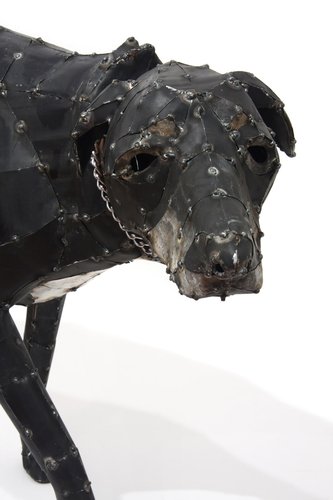


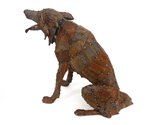
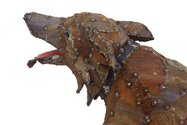
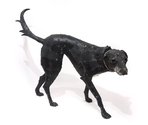
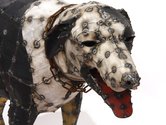
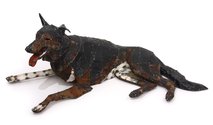
 Advertising in this column
Advertising in this column Two Rooms presents a program of residencies and projects
Two Rooms presents a program of residencies and projects
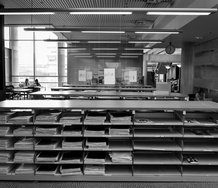
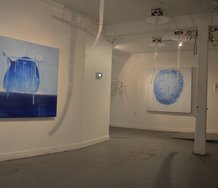
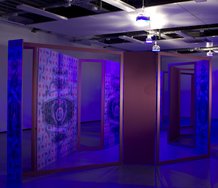
This Discussion has 5 comments.
Comment
Andrew Paul Wood, 9:26 p.m. 19 March, 2012 #
I like that the rivets and metal patchwork are so obvious
John Hurrell, 8:36 a.m. 20 March, 2012 #
Is this work just a mutty version of Jeff Thomson? Apart from craft, is there perhaps a semiotic layer, some aspect of the materials or treatment that tell us about dogs and their place in our world? Are they not too obvious?
Erin Driessen, 11:42 a.m. 20 March, 2012 #
Andrew, I like it too; if they were more polished they would just be props.
See what you did there, John. By themselves, even though they are technically brilliant, I find them entirely uninteresting. But in that space, positioned as they are, they go beyond anything simply semiotic and actually create quite a powerful phenomenological experience. The photos here don't evoke that, unfortunately.
Clare Logan, 9:38 a.m. 15 May, 2012 #
Perhaps rather than providing viewers with a comfortable point of reference to where the dogs "belong", the landscape paintings reinforce the fact that the sculptures are not, in fact, in a rural environment, instead displaced into an urban setting, emphasizing the urban/rural tension of their placement in an indoor, walled space.
Andrew Paul Wood, 12:16 p.m. 15 May, 2012 #
Might be over-thinking it slightly - lots of people in urban setting own working breeds as pets. I'm not discounting it, but I don't think it's conscious.
Participate
Register to Participate.
Sign in
Sign in to an existing account.